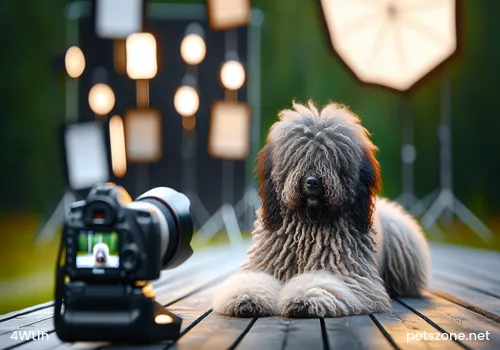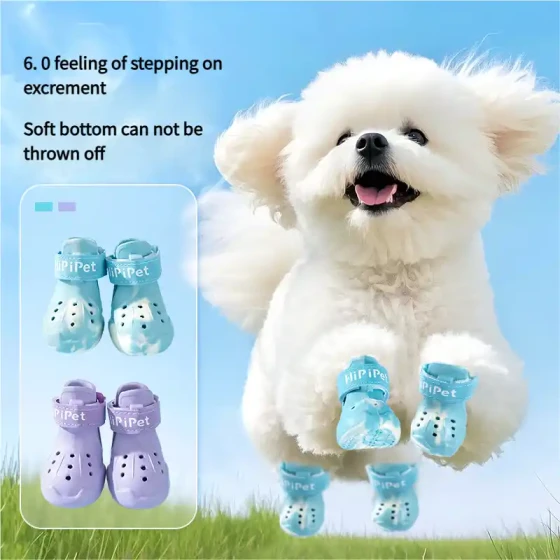Yorkshire's Care Knowledge

Yorkshire (detailed introduction)
Having a beautiful silky long-haired Yorkshire makes many people envious. The beautiful appearance is not only due to good genes, but also the importance of later grooming. As the saying goes: 30% looks, 70% grooming, that's how it is. There are many things to pay attention to during the Yorkshire's growth.
Health Care
Care
In addition to regularly cleaning teeth, ear canals, and eyes, to maintain beauty, you should frequently groom and comb your Yorkshire's coat. Start grooming them from a young age so they become accustomed and naturally do not resist. Try to keep their shiny golden-yellow coat long, and comb regularly to prevent tangles and keep the coat shiny. If you consistently comb and dry-clean, bathing is only needed once every few months.
Yorkshire
Yorkshires only need indoor activity to get sufficient exercise and do not require frequent outdoor walks to avoid dirtying their long silky hair. If taken outside, choose clean and dry areas. Because of their small size, their food intake is naturally not much; feeding once a day is sufficient (only for adults). Yorkshires have fragile teeth, so avoid feeding hard items.
They naturally enjoy being affectionate with people and may seem a bit impatient in some situations, but that's because they strongly need their owner's love and have many smart ideas in their heads. If you try to understand the reason behind their barking, you won't find it annoying.
Every owner hopes to raise a healthy and lively beloved dog, but some minor to major health problems are unavoidable. What’s important is to understand the diseases your dog is prone to, know how to observe symptoms, and describe them accurately to the vet to best help them. Every breed has its physical traits and common diseases, and Yorkshire is no exception.
Special Care
1. Yorkshires easily lose teeth, so avoid contact with hard objects to prevent accidents.
2. The most challenging aspect of Yorkshire care is their long hair, improper care can easily lead to skin diseases!
3. Yorkshires are dominant and will not hesitate to attack other dogs, even those larger than themselves, showing no sign of fear.
Tail Docking Knowledge
Yorkshire Terrier tail is docked at half its total length, held slightly higher than the back.
Bathing Knowledge
In winter, the recommended water temperature is close to body temperature, about 35 to 38 degrees Celsius, which feels most comfortable for Yorkshires. Hot water causes skin blood vessels to dilate violently, affecting brain blood supply. For pregnant females, too-high water temperature can cause severe fetal hypoxia, with serious consequences. After walking on a hot day, do not plunge your Yorkshire immediately into cold water, as sweat pores close rapidly, making it hard for internal heat toxins to be expelled. Frequent occurrence may cause arthritis and related diseases. Therefore, even in summer, water temperature should be above 15 degrees Celsius.
Required Tools
Stiff bristle brush, medium wide-tooth comb, pin brush
Grooming Tips
Long hair requires professional care
Grooming Steps
1. Brush hair; use detangling tools and sprays if necessary, avoid pulling the hair hard
2. Trim dog's nails, clean ears and teeth
3. Pluck excess hair inside the ears
4. To protect hair quality, use appropriate shampoo and conditioners to enhance hair quality
5. When blow-drying, comb continuously with a pin brush until completely dry
6. Spray conditioner and comb the whole coat with a bristle brush
7. Trim ears to about half way to the tip, shaping edges neatly with scissors
8. Pets may be fully trimmed like a poodle lamb cut, or some owners trim them in a schnauzer style
9. Show dogs’ coat must be frequently cared for; use nourishing oils on long hair and roll it up to prevent breakage and promote shiny long coat growth.
Final Reminder: Before bathing your Yorkshire, make sure to express their anal glands. Also, Yorkshires may get stubborn during bathing or blow-drying and tend to slip on the floor.


-560x560.webp)
